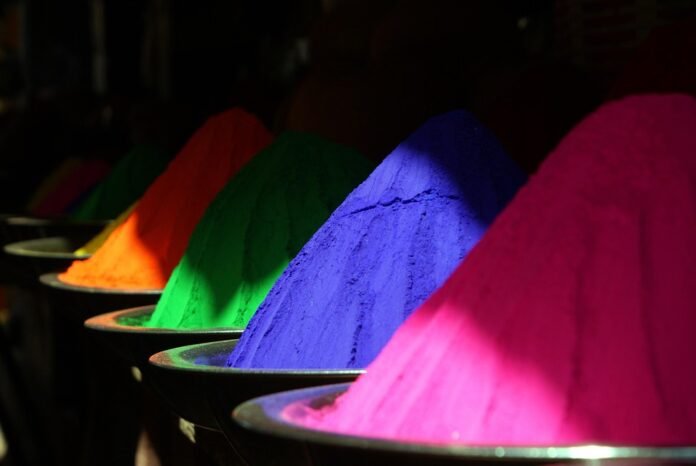Of course. Here is an article on India’s political landscape, focusing on shifting alliances and evolving ideologies.
The Great Indian Churn: Navigating a Landscape of Shifting Alliances and Evolving Ideologies
India’s political landscape is not a static map but a vibrant, ever-shifting kaleidoscope. To understand it is to appreciate a constant state of flux, where alliances are forged and fractured with bewildering speed, and ideological goalposts are perpetually moving. The journey from single-party dominance to chaotic coalitions and now to a new era of centralized power reflects the deep social, economic, and cultural transformations of the world’s largest democracy.
From the Congress System to the Coalition Era
For decades after independence, Indian politics was synonymous with the Indian National Congress. The "Congress System" was a big-tent party, accommodating a wide spectrum of ideologies under a broad secular, socialist-leaning umbrella. This dominance, however, began to erode in the late 1980s, giving way to the rise of regional and caste-based parties.
This fragmentation ushered in the era of coalition politics. The 1990s and 2000s were defined by "Khichdi" governments—a term for a mixed rice and lentil dish, aptly describing the jumble of parties that had to come together to form a majority. Alliances like the National Front, the United Front, and the National Democratic Alliance (NDA) became the norm.
This period was characterized by political pragmatism, often at the expense of ideological purity. Parties with diametrically opposed manifestos would join hands to seize power, driven by the simple arithmetic of parliamentary seats. The key takeaway was that survival in New Delhi depended on compromise and the art of the political bargain.
The Modi Era: A New Paradigm of Dominance
The decisive victory of the Bharatiya Janata Party (BJP) under Narendra Modi in 2014, followed by an even larger mandate in 2019, dramatically altered this landscape. While the BJP-led NDA is technically a coalition, the party’s own majority in Parliament has created a new paradigm: dominance with allies, rather than dependence on them.
This shift has been underpinned by a potent and evolving ideology. The BJP’s core platform of Hindutva (cultural nationalism) has been masterfully blended with three other powerful narratives:
- Vikas (Development): A focus on infrastructure, economic growth, and ease of doing business.
- Welfarism: The creation of a new vote bank of labharthis (beneficiaries) through direct benefit transfers for schemes like subsidised housing, free gas cylinders, and food grains. This has allowed the BJP to co-opt a traditionally left-wing plank.
- Nationalism: A muscular foreign policy and a strong stance on national security have become central to its appeal, resonating deeply with a significant portion of the electorate.
This combination has successfully cut across traditional caste and class lines, creating a formidable electoral machine that has left the opposition struggling to find a counter-narrative.
The Evolution of Ideological Battlegrounds
The core ideological debates in India have themselves transformed.
- Secularism vs. Communalism: While still a fault line, this debate has been reframed. The BJP has successfully positioned its brand of cultural nationalism as authentic patriotism, while casting the opposition’s secularism as "appeasement politics."
- Socialism vs. Capitalism: The 1991 economic reforms rendered this debate almost obsolete. Today, every major party accepts a market-based economy. The new battleground is over the nature and extent of the state’s role in welfare. The BJP’s model of targeted welfarism competes with the opposition’s promises of broader social safety nets and old pension schemes.
- Caste and Identity: Caste remains a fundamental reality of Indian politics, but its expression has changed. While regional parties continue to champion the interests of specific caste groups, the BJP has worked to create a larger, consolidated Hindu identity that subsumes many of these divisions, particularly by reaching out to the Other Backward Classes (OBCs) and Dalit communities.
The State of the Opposition: A Search for Unity and a Story
The current political landscape is defined as much by the BJP’s strength as by the opposition’s fragmentation. The Indian National Congress, once the natural centre of political gravity, is grappling with an existential crisis, struggling to connect with voters and resolve its leadership dilemma.
In its place, powerful regional satraps have emerged as key opposition players—figures like Mamata Banerjee in West Bengal, M.K. Stalin in Tamil Nadu, and Arvind Kejriwal in Delhi. Their strength, however, is largely confined to their respective states.
The formation of the I.N.D.I.A. (Indian National Developmental Inclusive Alliance) is the opposition’s most significant attempt to counter the BJP’s hegemony. However, this alliance is a tightrope walk. It brings together parties with historical rivalries and ideological contradictions, forcing them to prioritise the singular goal of defeating the BJP over their own regional ambitions and policy differences. Their challenge is not just to stitch together an alliance, but to offer a compelling and coherent vision for India that can rival the BJP’s powerful narrative.
The Road Ahead: Constant Churn
India’s political landscape is in a state of profound churn. The era of loose, opportunistic coalitions has given way to a dominant-party system, but one built on a new ideological foundation. Ideologies are no longer rigid doctrines but flexible tools, with welfarism and nationalism being wielded across the political spectrum.
The only certainty is change. The questions that will define the next chapter of Indian politics are pressing: Can the BJP sustain its remarkable electoral dominance? Will the I.N.D.I.A. alliance hold together and find a resonant message? And most importantly, how will the evolving aspirations of 1.4 billion people continue to shape and reshape the alliances and ideologies of their leaders? In the great Indian political churn, the next turn of the kaleidoscope is never far away.

